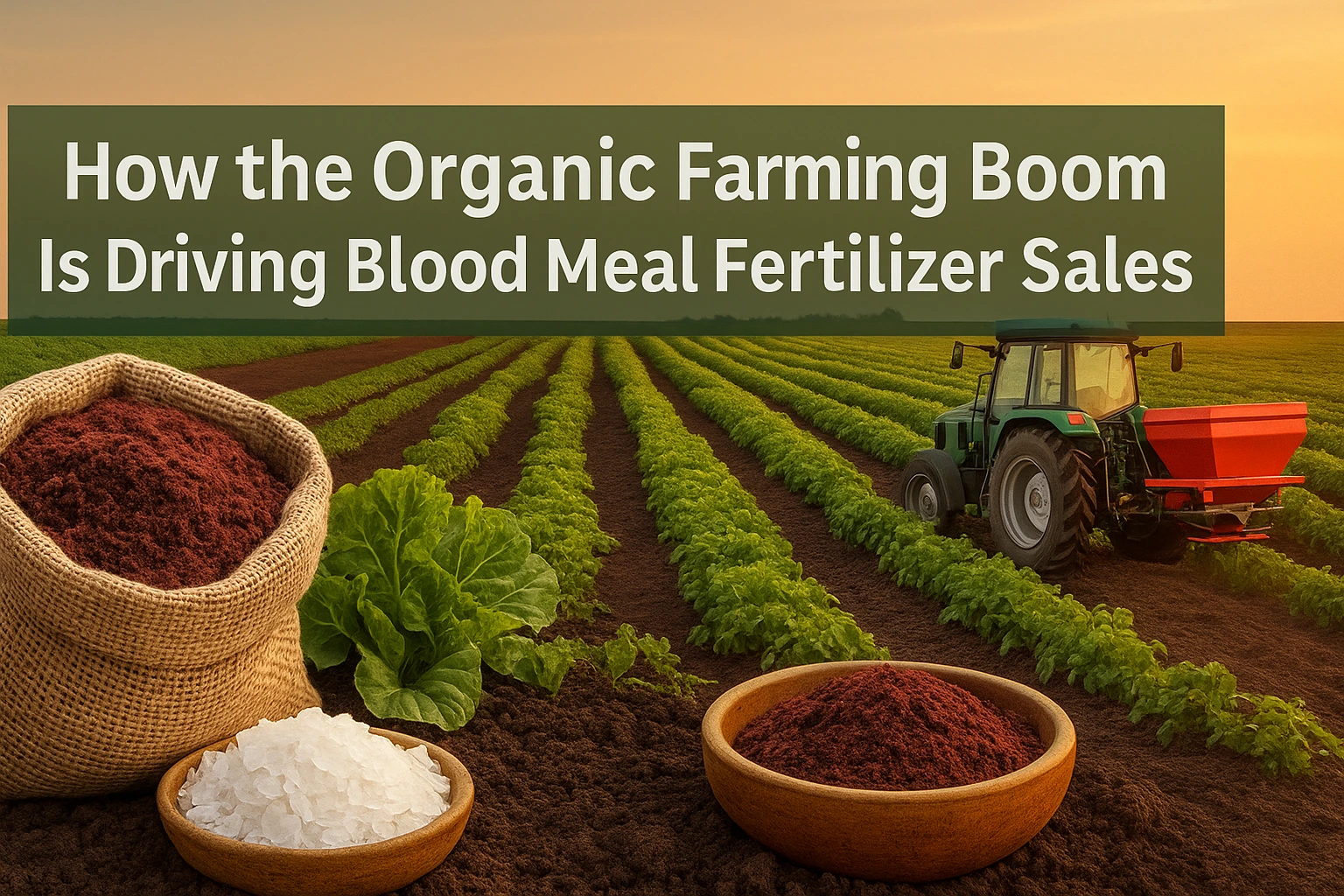1. Introduction: Organic Agriculture’s Shift to Natural Inputs
The global organic agriculture sector is booming—2024 saw organic farmland surge by 26% to over 96 million hectares. As farmers and consumers reject synthetic chemicals, natural fertilizers like blood meal have become essential for boosting soil fertility, promoting crop yields, and meeting organic certification needs. Blood meal, a byproduct upcycled from the meat industry, embodies the trend toward more circular and eco-friendly farming, providing a high-protein, high-nitrogen option that ticks both environmental and productivity boxes.
2. Why Blood Meal? Nitrogen, Soil Health, and Circular Value
Blood meal offers 12–15% fast-acting nitrogen, key for leafy vegetable, cereal, and specialty crop growth, while also supporting robust soil microbiology. Organic farmers value its rapid nutrient release, low cost, and the added iron content, which supports healthy plant coloration and disease resistance. Unlike synthetic urea or ammonium fertilizers, blood meal’s natural origins help farmers comply with organic standards and reduce fossil-derived inputs. Its value grows as animal waste is upcycled, closing nutrient cycles and supporting a true circular economy in agri-food systems.
3. Market Trends: Data, Regional Growth, and Future Outlook
Global demand for blood meal fertilizer is exploding: the market was worth $2.3 billion in 2025 and is set to rise to $3.1 billion by 2035 at ~3.6% CAGR. Asia-Pacific leads this growth, fueled by rapidly expanding meat sectors in China and India as well as growing populations and shrinking arable land. The organic fertilizers market as a whole is predicted to double by 2032, reaching $32 billion, with blood meal remaining a leading nitrogen source for regenerative and high-value agriculture. North America and the EU are also driving demand due to government incentives and consumer demand for organic produce.
4. Supplier Strategies and Challenges
Blood meal producers are scaling up with investments in precision drying, packaging innovations, and enhanced traceability to meet strict organic certification and safety requirements. While demand is surging, the market faces challenges: high production costs for odor-free blood meal, stringent animal byproduct rules in some countries, and the need to balance supply with sustainable slaughterhouse operations. Suppliers are also diversifying offerings—liquid, granule, and value-added blends—to cater to different crops and application methods. Advanced logistics and strong relationships with slaughterhouses are key to ensuring a secure, consistent supply chain.
5. Conclusion: Blood Meal—Fueling the Next Wave of Green Farming
The organic agriculture boom is transforming both production and market opportunities for blood meal fertilizer. As farms worldwide shift to NATURAL inputs, blood meal stands out for its sustainability, productivity, and regulatory acceptance—making it an essential lever for the next era of regenerative crop nutrition.

Leave a Comment